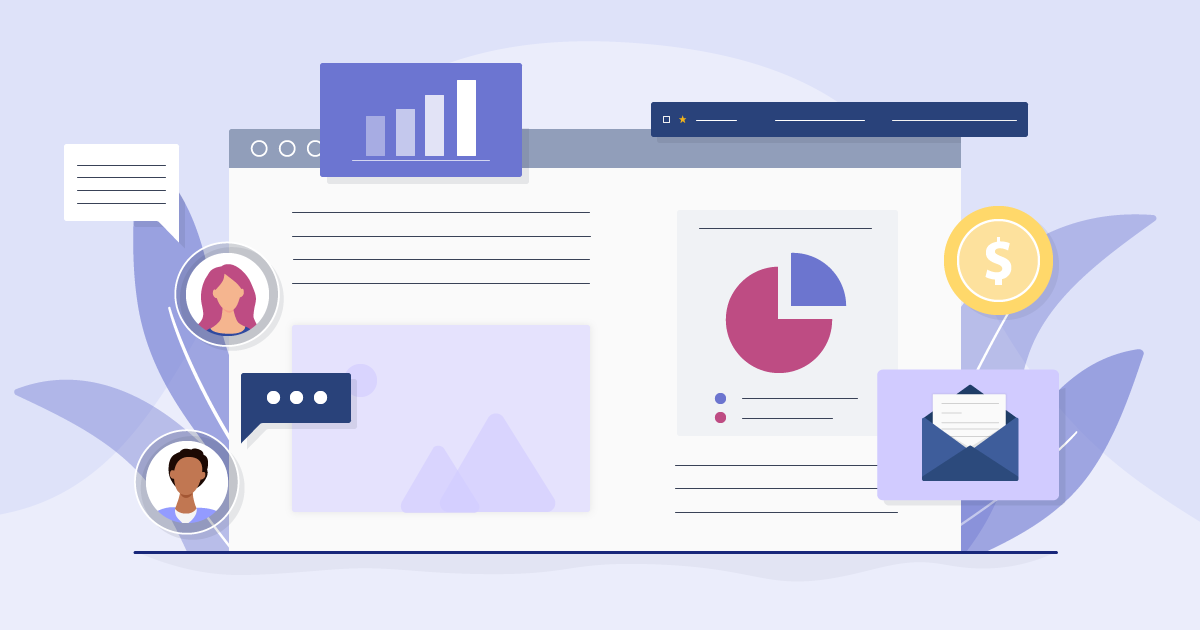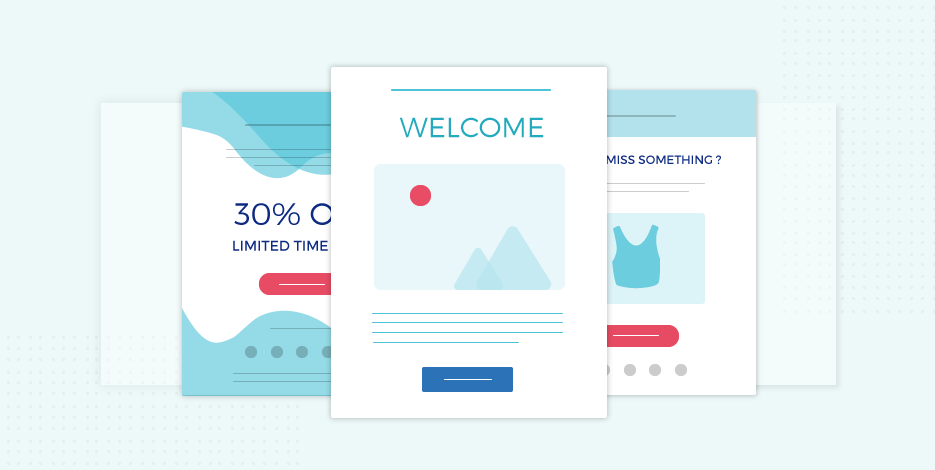
20 B2B Email Marketing Examples & Why They Work [2025]
Since forever, business-to-business companies have used email marketing campaigns to reach a wider audience, generate more revenue, and engage new leads.
However, some companies still use this marketing channel wrong, failing to create effective email marketing strategies that capture the attention of a busy audience.
Today, we’ve hand-picked 20 great B2B email marketing examples to help you see:
- what makes a good email
- how to craft content that attracts potential customers
Let’s start!
What Is B2B Email Marketing?
B2B email marketing is a marketing strategy that focuses on reaching out to potential clients for business-to-business sales.
The main objective of B2B email marketing campaigns is to attract leads by discovering the core audience’s issues and offering solutions that solve their problems.
Since it’s a purchase that can significantly impact a company’s bottom line, B2B should offer straightforward, benefits-focused, and more educational content than business-to-consumer (B2C) content.
So why do B2B companies need email marketing to reach their audience?
Let’s find out in the next section.
Why Email Marketing Is Important For B2B Companies
Since the email marketing industry is worth around 7.5 billion dollars — and that number will continue to grow in the coming years — email is worth the investment.
Effective email marketing strategies have the power to aid companies in connecting with their target audience and generating more leads.
Let’s look at some of the benefits:
- Increased return on investment (ROI): Good email marketing campaigns allow businesses to reach new customers and cost-effectively drive more revenue.
- Better lead generation: You can build engagement through email marketing campaigns to reach a wider audience with valuable content in exchange for opt-ins and email addresses.
- Improved customer retention: Clients want to feel you care about their preferences. So, by offering personalized emails, such as offers, recommendations, or helpful tips, you can stay at the front of their minds and build stronger customer relationships.
- Greater insights into customer behavior: Email marketing helps you track important metrics, customer activity, and purchase history to better target your marketing efforts.
Luckily, you can use software — like Moosend — to help you manage your email content and campaigns effectively and efficiently.
With Moosend, you can create professional campaigns that engage your audience with powerful and easy-to-use digital marketing automation features.
We’ve now reached the part you’ve been waiting for — let’s look at the most outstanding B2B marketing examples to get your creative juices flowing.
20 Great B2B Email Marketing Examples To Inspire You
With the benefits of a good B2B email marketing strategy in mind, it’s time to get practical.
Below, we’ve collected the best emails and drip campaigns from various companies that can serve as excellent examples of B2B marketing.
Let’s see each of them in action!
1. Asana
Subject line: You’re invited to Asana’s virtual workshop
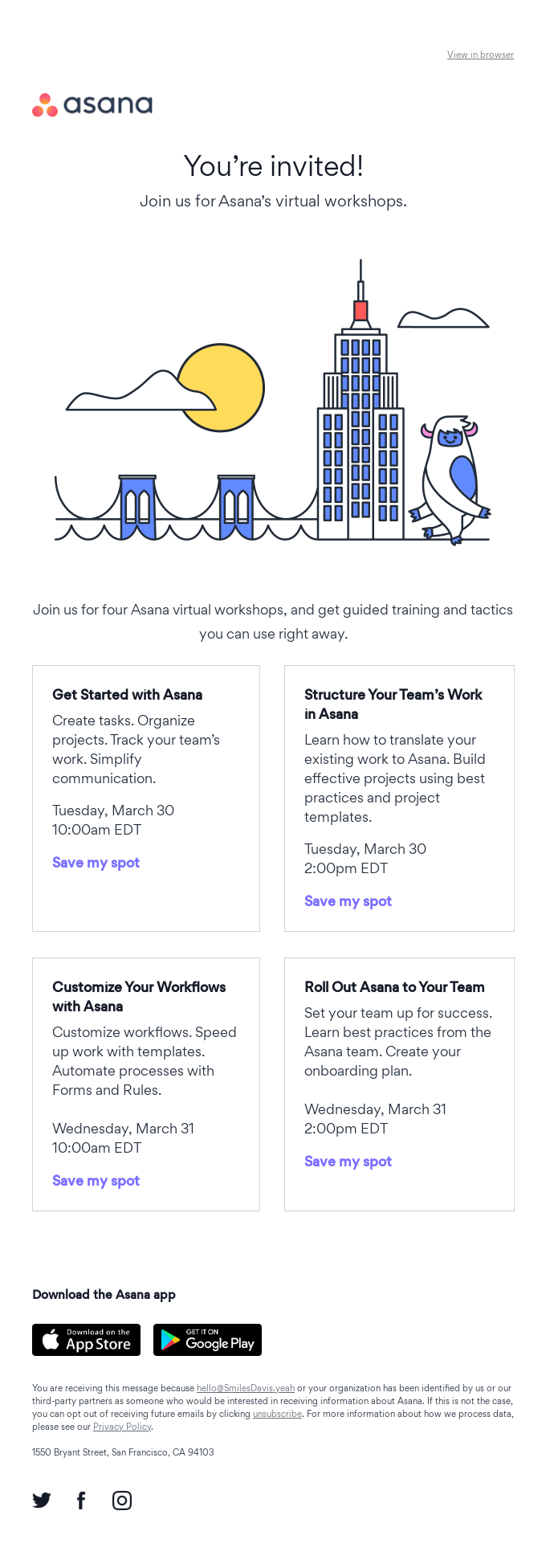
Event emails are a cool way to attract new customers and persuade people to use your services to fix their problems.
Asana understood the assignment and created an effective event email that promotes their online workshops in a simple but efficient way.
It’s an informative and educational email that entices readers to participate in one or more virtual workshops, depending on their needs and familiarity with Asana’s solution, so that they can learn more.
Through the use of “You’re invited,” Asana manages to personalize the email and makes the subscriber feel valued for being selected to participate in these webinars.
2. Greetabl
Subject line: Have you found the perfect client gift?
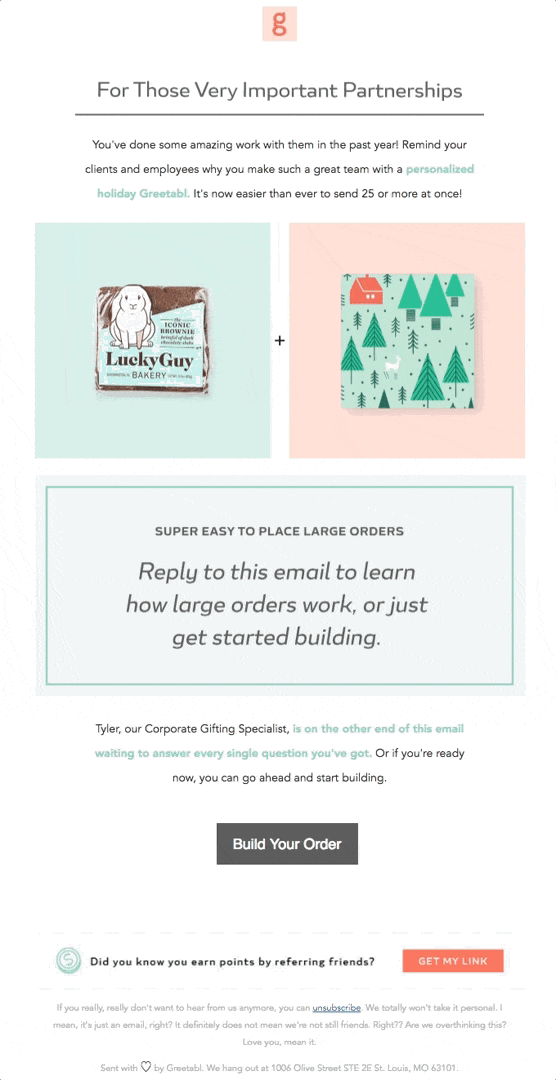
High-quality content is one of the best ways to strengthen business relationships, as it leaves a lasting impression on the recipient and increases brand loyalty.
Greetabl offers a straightforward solution that nurtures long-term relationships between businesses and their customers.
It incentivizes the reader by emphasizing how easy it is to make large orders for corporate events.
And, even if the reader struggles with making a purchase, Greetabl has an official Corporate Gifting Specialist who offers a helping hand to those who have questions.
3. Shopify
Subject line: Join the Shopify Partner Program

This email is a perfect example of a personalized offer.
Shopify studied the recent activity of the recipient and noticed that they’d created an online store for someone else.
Since they have the Shopify Partner Program — a group of web designers, developers, and consultants who use Shopify to build e-commerce websites — they want to persuade the subscriber to enroll in their program.
Aside from listing all the benefits of joining the program, Shopify makes it personal by relating to the reader through “like you,” signaling that it’s a highly beneficial solution for people with similar interests.
4. InVision
Subject line: 3 ways teams (like yours) use Freehand

The recent pandemic divided us, creating new ways to collaborate and leading to the rise of remote work.
During this period, many companies struggled to adjust to this change and make collaboration easier; and with so many people working from home, it was quite challenging.
InVision researched the market, saw the problem, and developed a solution.
This promotional email introduces a new product called InVision Freehand that helps distributed B2B businesses collaborate better and share ideas easily.
The rest of the email shows the product’s features, ending with a call to action (CTA) button encouraging people to test it.
Simple, yet effective!
5. Hootsuite
Subject line: Save over $700 on Hootsuite plans and certifications

Seasonal marketing will always capture your reader’s attention — and it’s an effective email marketing best practice that engages more consumers and boosts your bottom line.
This email is a perfect example of promotions and sales based around a certain time of the year.
For the whole Cyber Monday week, readers can buy Hootsuite products or courses at a discount, varying from affordable plans to online courses to trials.
It’s an optimal transaction for the client and the business: email subscribers can level up their skills or enhance their social media efforts, and businesses can generate the desired revenue and traffic.
6. Semrush
Subject line: Boost online traffic

Companies should take advantage of professionally-designed newsletters, which are essential when building customer relationships and segmenting email lists.
Semrush’s message is an excellent example of how an email newsletter should look.
Using a simple email design, Semrush drives traffic and click-through rates with carefully curated content that matches the recipient’s preferences.
As a result, they can keep existing and new subscribers engaged by tailoring content to the audience’s needs, interests, and wants.
Moreover, they’ve also included a quick survey where subscribers can leave feedback so Semrush can gauge the response to these types of emails and adjust their direction with more accurate content, if necessary.
7. Xero
Subject line: Welcome to Xero — let’s get started

These nice follow-up emails serve one purpose: to welcome new users who recently subscribed to a company’s services.
It might seem more formal than other examples, but readers expect to see this kind of message after performing such an action in their first email.
Xero also uses this welcoming email to thank the reader for choosing its services. At the same time, it encourages them to take the first step by offering instructions on adding their business contact information to the platform.
Lastly, the brand offers the option to buy their solution if consumers want to deepen their knowledge.
8. Zapier
Subject line: Your Zapier trial has ended
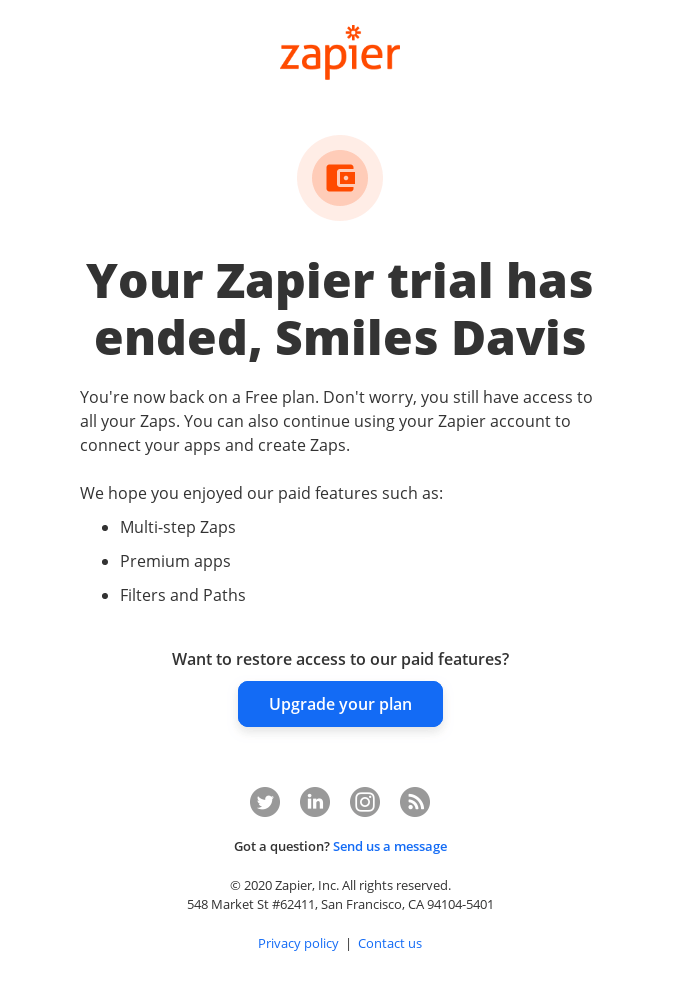
You can generally see these emails when you join a trial version of a solution or subscription.
The purpose is to point out to the user that the demo or subscription will come to an end. Zapier notifies the reader in this announcement email that their access to paid features has expired.
They also reassure the user that they still have access to the solution, but they can only use features available in the free plan.
To retain subscribers long-term, Zapier cleverly offers them the chance to upgrade their plan and restore access to paid features.
9. Sprout Social
Subject line: [Invitation] Intro to Sprout Webinar
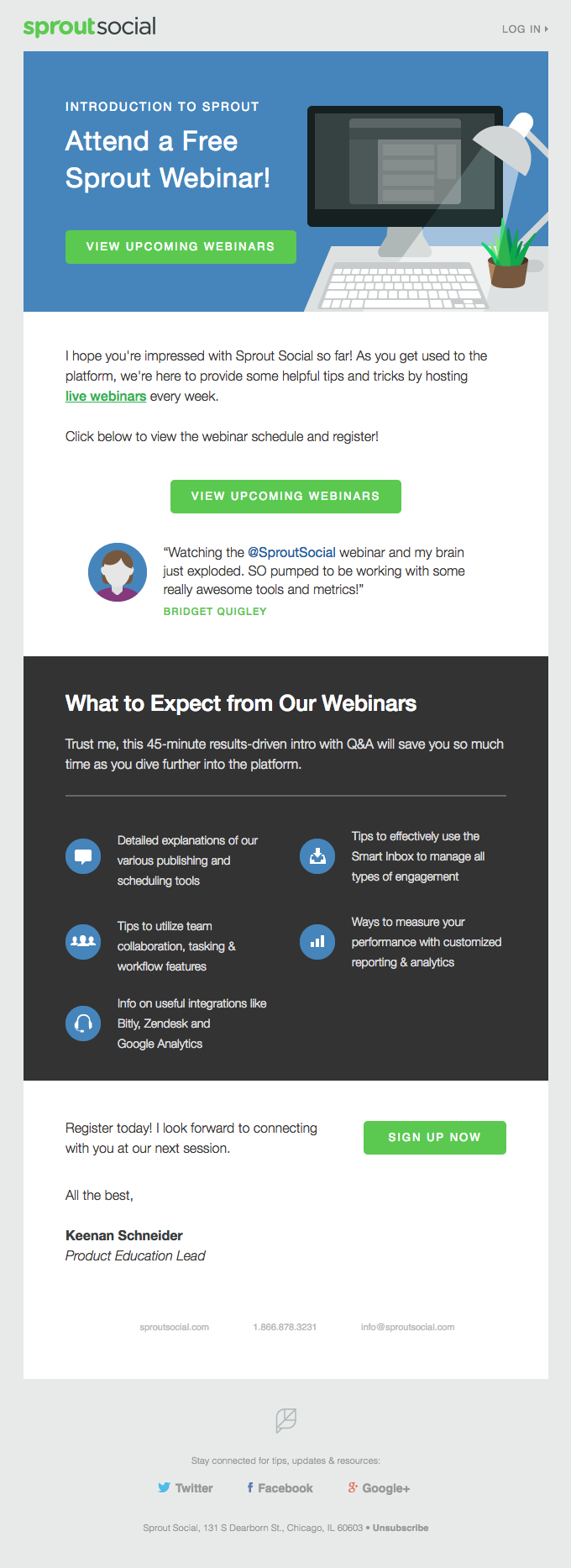
Webinar emails have one single objective: promoting a company’s online webinars.
Invitations and webinar email subject lines are easy to create — and it’s an excellent opportunity to generate the results you want and deepen your connection with customers.
Sprout Social uses a familiar tone to invite the reader to attend an upcoming series of webinars that go live weekly to discuss the new features and tips on using the platform.
The email contains other useful information, such as instructions on registering for the event, what users can expect, and even a review that guarantees the quality of the webinar.
10. Salesforce
Subject line: Ready to reopen your business? Use this guide to keep your employees safe.

A very B2B-esque practice is to promote company case studies, guides, infographics, or white papers to generate more leads.
This content marketing strategy aims to email existing or new customers and offer them relevant guides that will help them streamline their business — while also offering Salesforce’s services as a solution to their challenges.
People interested in Salesforce’s guide will click on one of the CTA buttons, redirecting them to a landing page where they can see and download the resource, usually for free.
These emails follow a simple template, starting with the problem, offering a solution (which the reader can find in the guide), and ending with what the white paper will cover.
11. MarkUp
Subject line: MarkUp Workspaces Beta is LIVE!! 🎉🎉

Now this is how you announce a product’s new features.
MarkUp captures the reader’s attention right from the get-go, with subject lines that aim to produce excitement by using emojis and exclamation points.
So, people interested in MarkUp’s solution will want to read more — and even test the new features for themselves ASAP.
This email paints a vivid picture of the platform’s Workspaces Beta while promising exciting new things.
Lastly, MarkUp invites readers to leave their thoughts at the end, another great engagement method.
12. Buffer
Subject line: Have you seen Buffer’s latest features?
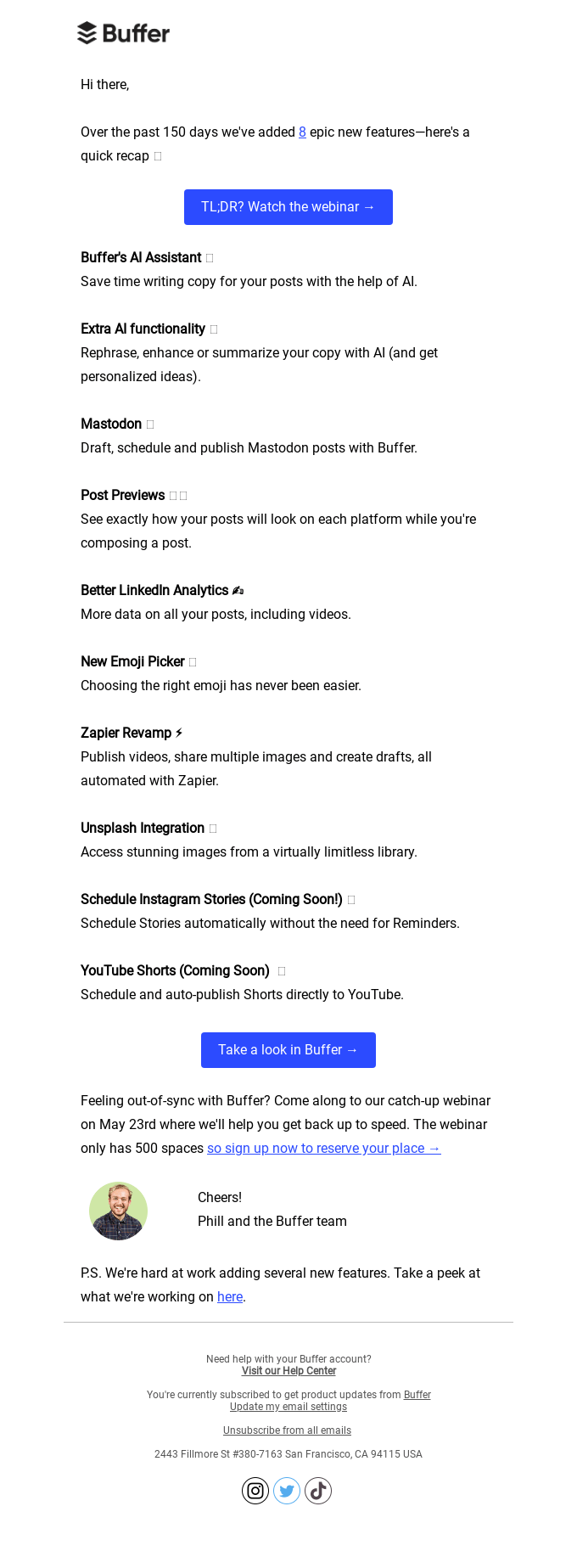
Sometimes, users either stop opening your emails or simply unsubscribe from your list for various reasons.
Yet all hope is not lost! You can use re-engagement emails to win your subscribers back and remind them what they miss out on.
This is a strategy Buffer employs.
In their email, they talk about their solution’s new features and make them look exciting.
Moreover, Buffer offers a helpful catch-up webinar to get readers up to speed with product updates and use the fear of missing out to make readers join as quickly as possible.
13. Trello
Subject line: Conduct better remote interviews

This wonderful, colored, and fun email from Trello offers great marketing tips for conducting better remote interviews.
While there’s little interaction with the reader, the newsletter aims to gain click-through rates by offering personalized content that resonates with the target audience.
Moreover, users can access each resource through a customized and inviting CTA button, while snippets reveal something about each piece of content.
At the end of the email, Trello offers a sneak peek into their solutions and invites the reader to try their product for free.
14. Smashing Magazine
Subject line: How To Make Honest Design Work For Digital Business: Meet “Ethical Design Handbook”

When you have a product that’s simply too good to keep to yourself, you must share it with your customers.
In Smashing Magazine’s case, it’s a handbook for designing digital products.
This email promotes the book and details what users will learn from it with informative bullet points and a sneak peek at the table of contents.
To incentivize the readers to purchase this handbook, Smashing Magazine offers a free PDF sample of testimonials that users can read to make an informed buying decision.
In addition, recipients can receive the e-book for free if they’re subscribed to paid plans — and might even get a $5-$10 discount on future products.
15. Webflow
Subject line: Our efforts to keep local businesses afloat
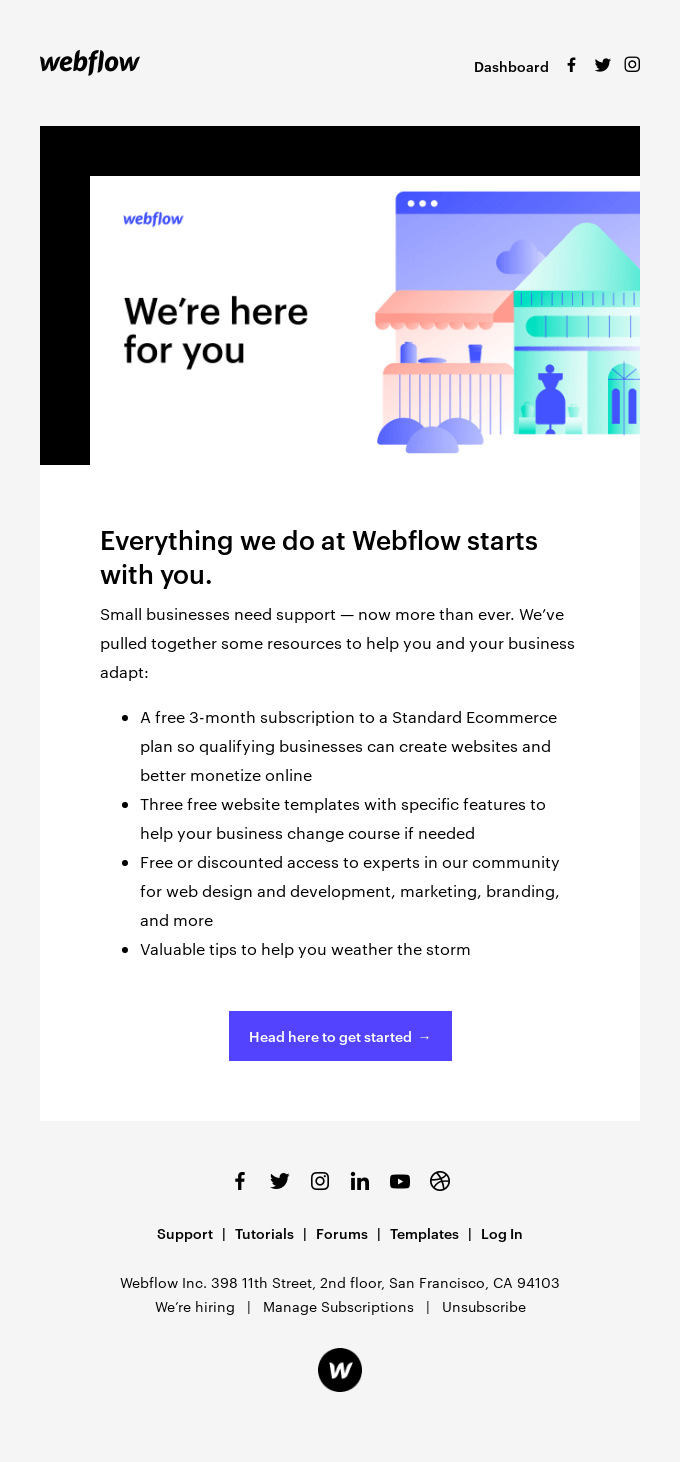
When users hesitate to invest in your solution, you might need to nudge them in the right direction.
A small email that reassures them you’re there for them might be the last push that gets them to act.
Webflow uses this strategy to encourage readers and show them that taking this first step isn’t scary.
By listing their features — from three free website templates and discounted access to specific features — Webflow creates a positive impression about their services in a straightforward manner.
This way, readers feel safe knowing that Webflow will be there with them on every step of the journey.
16. Divvy
Subject line: April Update — We’ll get through this together

A few years ago, COVID-19 affected many businesses.
It was a time of unrest, struggle, and confusion — but many companies, like Divvy, stepped up to the plate and tried to help others make this journey smoother.
To drive traffic, Divvy offers subscribers valuable resources that’ll get them through the storm.
By using relevant and engaging content, this company drives the desired conversion rates and generates more leads while reassuring readers that they have Divvy’s support down the line.
17. Google
Subject line: Get help creating your first ad

Many companies use paid advertising to drive traffic to their website and increase their exposure to interested audiences.
Naturally, Google knows that and wants to convince potential clients that they can easily create compelling advertising with their services.
To persuade subscribers, Google starts listing its solution’s benefits.
Then, to emphasize how excellent their services are, they add statistics that show subscribers how millions of businesses increased conversions and found new customers with Google ads.
For those interested in getting more information, Google included a helpful link to a case study.
18. PayPal
Subject line: What did other leaders learn from an eventful 2022?

You can learn many things from analyzing the past year — and PayPal uses this knowledge to its advantage.
In this email, they offer valuable resources for business leaders who want to see what next year has in store.
This guide allows readers to learn from past mistakes and better prepare for future challenges.
Since the resource comes with insights from experienced leaders, the reader has the guarantee that they’ll learn something valuable.
It’s a simple email that aims to increase conversions, traffic, and open rates by offering riveting content.
19. Harvest
Subject line: Want to boost team productivity and retention? Here’s how.

So, do you want to boost team productivity and retention? We bet you do!
With such a compelling subject line, it’s hard to resist clicking on it, as it draws your attention.
While pleasing and straightforward in appearance, Harvest’s interesting monthly email also offers content that resonates with its target audience.
Aside from offering valuable resources for interested parties, this newsletter also acts as an announcement.
At the end of the email, Harvest advertises a product update and invites subscribers to read more by clicking the CTA button.
20. Pitch
Subject line: Confirm your email address
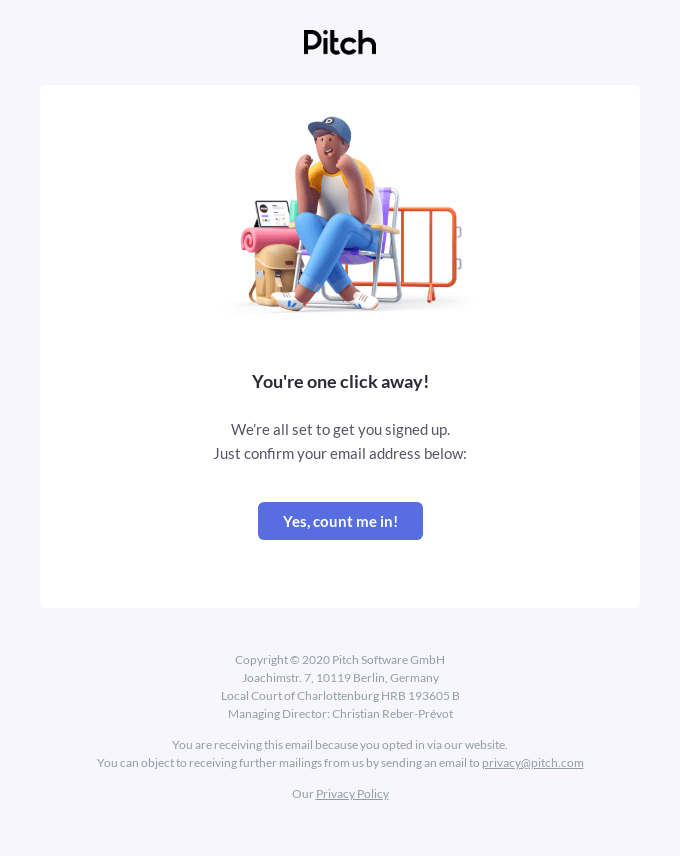
This is more of an automated email that lets the reader know there’s only one more step before they gain access to their account.
It’s a standard confirmation email that every company sends when someone registers to the platform or creates an account.
The email aims to acknowledge the transaction and put the clients at ease; by establishing themselves as trustworthy, Pitch builds a positive first impression and convinces readers it’s worth the investment.
And that’s it! Our list of B2B email examples is finally at an end.
We hope you’ve found something that inspires you and use this knowledge to create emails worthy of your client’s attention.
But before we part ways, let’s take a quick look at the differences between B2B and B2C.
What is the Difference Between B2B and B2C Email Marketing?
We’ve briefly touched on this subject earlier, but let’s explore it further.
While both concepts deal with communicating with customers and guiding prospects through the funnel, four key differences make them unique:
- Buying cycle: B2B marketing takes more time than B2C. B2B customers often evaluate each aspect of the product before purchasing, and it involves more stakeholders. On the other hand, the B2C process is shorter and often relies on a buyer’s impulsive nature.
- The tone of voice: B2C is more casual, friendly, and personal, aiming to pique someone’s interest by being simple and relatable. While B2B content can also be more casual, they tend to be professional and more objective.
- Email timing: In email marketing, timing is everything. While you can send B2C emails during late evenings or weekends, B2B needs more restraint. It’s a good idea to send emails when people are at work rather than on weekends. You can try the A/B testing feature of any email marketing software to see the best times to send your emails.
- Type of email content: B2C email marketing focuses on tugging people’s emotions through attractive visuals and personalizing the message. Meanwhile, B2B concentrates on benefits and features that help businesses save time and money.
Now Over to You
All the companies featured in this article understand how to engage customers and keep their attention effectively.
Now it’s your turn to start crafting emails that generate leads — but if you need an extra pair of hands, Moosend is here to help.
With email automation features that drive real revenue growth and beautiful email templates that build relationships, Moosend can quickly turn casual visitors into buying customers.
Don’t believe us? Try it for yourself today!



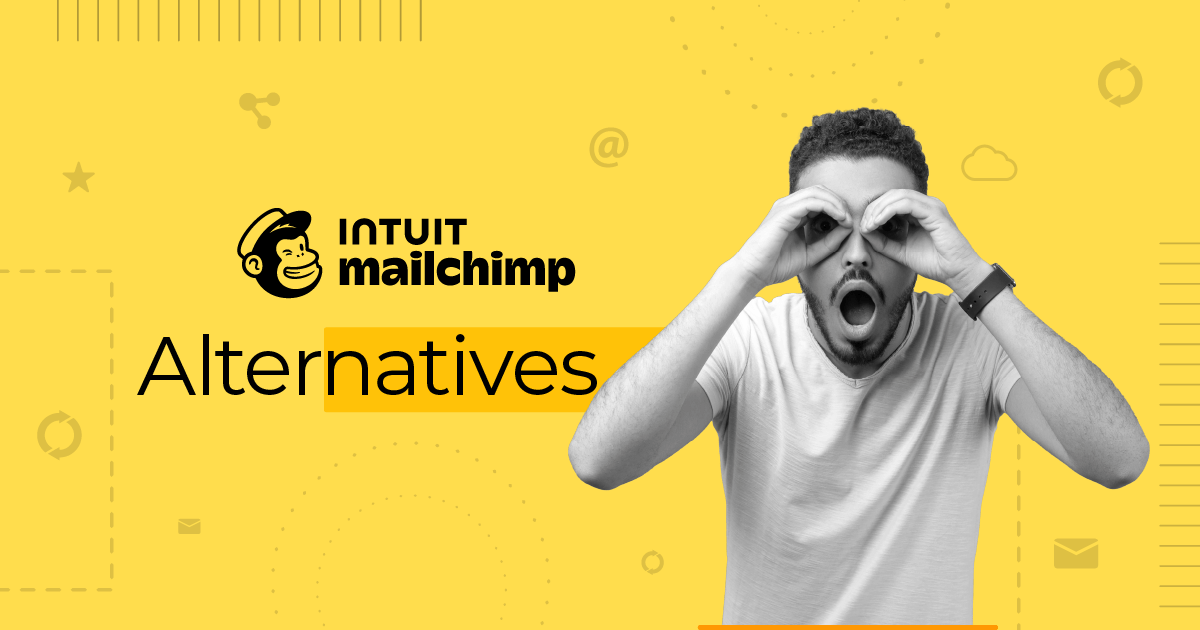
 Published by
Published by
